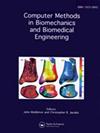基于半监督自编码器的脑电信号精神负荷识别。
IF 1.7
4区 医学
Q3 COMPUTER SCIENCE, INTERDISCIPLINARY APPLICATIONS
Computer Methods in Biomechanics and Biomedical Engineering
Pub Date : 2025-07-04
DOI:10.1080/10255842.2025.2523310
引用次数: 0
摘要
心理工作量——完成任务的认知努力——在系统设计、医疗保健和人机交互等领域至关重要。监督学习通常用于基于脑电图的工作负载识别,但受到标记数据稀缺的限制。为了解决这个问题,我们提出了半监督自编码器,它结合了标记和丰富的未标记数据。我们的模型将一个有监督的目标集成到一个无监督的自编码器中,形成一个联合函数,使重建和预测误差最小化。这增强了辨别力。为了克服消失/爆炸梯度,我们在图层之间添加跳跃连接。在两个脑电数据集上进行了测试,该框架在二值脑负荷分类上取得了较高的准确率。本文章由计算机程序翻译,如有差异,请以英文原文为准。
Mental workload recognition from EEG signals via semi-supervised autoencoders.
Mental workload-the cognitive effort to complete tasks-is vital in fields like system design, healthcare, and human-machine interaction. Supervised learning is often used for EEG-based workload recognition but is limited by scarce labeled data. To address this, we propose semi-supervised autoencoders that combine labeled and abundant unlabeled data. Our model integrates a supervised objective into an unsupervised autoencoder, forming a joint function that minimizes both reconstruction and prediction errors. This enhances discriminative power. To overcome vanishing/exploding gradients, we add skip connections between layers. Tested on two EEG datasets, our framework achieved high accuracy in binary mental workload classification.
求助全文
通过发布文献求助,成功后即可免费获取论文全文。
去求助
来源期刊
CiteScore
4.10
自引率
6.20%
发文量
179
审稿时长
4-8 weeks
期刊介绍:
The primary aims of Computer Methods in Biomechanics and Biomedical Engineering are to provide a means of communicating the advances being made in the areas of biomechanics and biomedical engineering and to stimulate interest in the continually emerging computer based technologies which are being applied in these multidisciplinary subjects. Computer Methods in Biomechanics and Biomedical Engineering will also provide a focus for the importance of integrating the disciplines of engineering with medical technology and clinical expertise. Such integration will have a major impact on health care in the future.

 求助内容:
求助内容: 应助结果提醒方式:
应助结果提醒方式:


